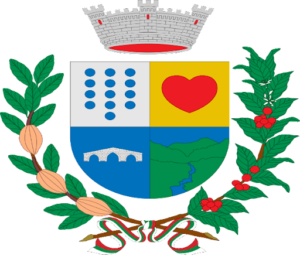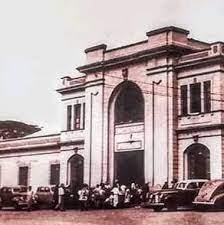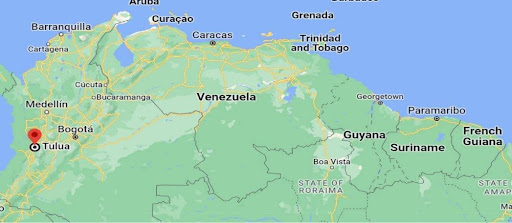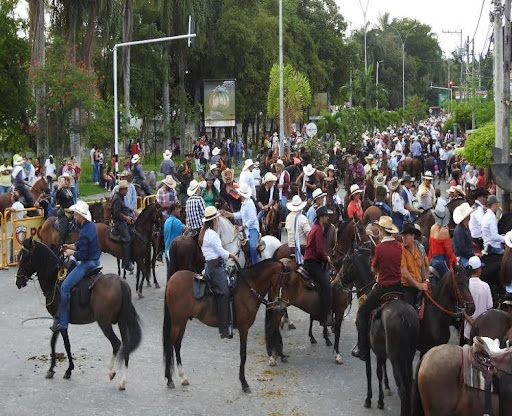Tuluá
Department
Valle del Cauca, Colombia

Flag of Valle del Cauca Department
Flag of the city


Slogan
The city known as the Corazón del Valle, which translates to ‘The Heart of Valle.’ Other names include La Villa de Céspedes, named in honor of the naturalist Juan María Céspedes, and Tierra Fácil, which means ‘Easy Land’ in the indigenous tongue.
History
Tuluá, situated in the Valle del Cauca department of western Colombia, was originally home to the Putimáes Indians. Early explorers named it Villa de Jerez. From 1556, starting with Bartolomé Giraldo Gil de Estupiñán’s expedition, the Indians resisted Spanish conquest until 1636 when Juan de Lemos y Aguirre subdued them. Lemos y Aguirre then set up a vast cattle ranch named Tuluá, using it as a base to oversee the surrounding areas. In 1814, after persistent efforts, Tuluá achieved municipal status, shedding its label as an Indian village, yet it kept its indigenous name. The city’s economic foundation is primarily agricultural, with a focus on beef, milk, yeast, and various food products. An annual event showcases top-quality cattle and industrial items. Tuluá is strategically located on the Pan-American Highway and the Puerto Berrío-Popayán railway. As of a 2007 estimate, the city had a population of 166,223.

Geography
The city of Tuluá is located at the coordinates 4°05′N 76°12′W,an altitude of approximately 960 meters (3,150 feet) above sea level. It is intersected by the Tuluá River. Situated 269 miles away from Bogotá, Colombia’s capital, it’s 63 miles northeast of Cali and 108 miles from the significant port city of Buenaventura on the Pacific coastline. While Tuluá’s urban expanse is somewhat compact, its metropolitan region is notably larger. The city is nestled between Colombia’s two western cordilleras and is approximately 50 miles east of Buenaventura.
Climate-wise, Tuluá’s proximity to the equator (just three degrees north) gifts it a tropical rainforest climate, as categorized by the Köppen climate classification. Days in Tuluá are typically hot and sunny, with temperatures often ranging in the high 20s to low 30s, but they can be interrupted by heavy rainstorms. Nightly temperatures usually hover in the upper teens. The city’s climate is conducive to growing a diverse range of fruits and vegetables.

Population
221,684 (2019)
218,812(2020)
232 441(2023)
One photo representative of the city
The Guillermo Ponce de León Paris Guadua Park in Tuluá stands as a testament to the region’s rich history and its bond with nature. Often referred to simply as Guadua Park, this location has cemented its significance not just as a recreational area, but as a cultural and educational epicenter for the city.
This park is named after Guillermo Ponce de León Paris, a visionary in Tuluá who recognized the potential and importance of the guadua, a native bamboo species. Historically, guadua has deep roots in the region, not just as a plant but as a lifeline for many communities. For generations, locals have turned to this versatile plant for a variety of purposes, from construction to artistry.
Guadua Park, therefore, serves as a living museum, showcasing the multifaceted uses of this bamboo. Visitors can wander through and witness firsthand the array of structures and creations fashioned from guadua. The park narrates a tale of how this plant has shaped the region’s architectural landscape and played a pivotal role in its economy.
Furthermore, beyond its practical uses, the guadua has also emerged as a symbol of sustainability and eco-consciousness in Tuluá. The establishment of Guadua Park underscores the city’s commitment to preserving its natural resources and promoting sustainable practices. It is not merely a place of leisure but a venue where one can delve deep into the intertwined history of Tuluá and its beloved bamboo, learning about the age-old traditions that have been passed down through generations.

Etymology
It is situated on the Pacific coast, on a small island at the south end of Tumaco Bay. Named for an Indian chief, Tumas, who founded the settlement in 1570, Tumaco experienced prosperity as the point of export for rubber and cinchona bark gathered in the eastern rain forest. After the boom period, Tumaco declined until it became the terminus of a pipeline from the Putumayo oil fields about 100 miles (160 km) to the southeast.
What the city is known or famous for
The Feria de Tuluá, held in the city of Tuluá in Colombia’s Valle del Cauca region, is an emblematic celebration deeply rooted in the area’s cultural and historical traditions. Originating in the early 20th century, the festival began as a modest gathering of local farmers and cattle ranchers eager to exhibit their products and livestock. Over the years, the event has transformed into a grand festivity, expanding beyond its agricultural origins to incorporate a plethora of activities and attractions. Today, it not only showcases the region’s agricultural and livestock prowess but also celebrates Tuluá’s rich cultural heritage, featuring music, dance, and various other performances that capture the spirit and vibrancy of the region. The festival has become a pivotal event for the city, drawing visitors from all over the country and even from abroad, eager to experience the unique blend of tradition and festivity that the Feria de Tuluá offers.


